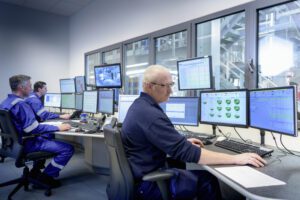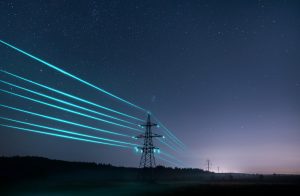A surge protector is an electrical appliance that is used for protection of the equipment against power surges and voltage spikes while simultaneously blocking voltage over a safe threshold (approximately 120 V). When it surpasses 120 V, the surge protector shorts to ground voltage or even blocks it. If you don’t use surge protectors, then anything above 120 V can create component issues like permanent damage, reduced lifespan of internal devices, burned wires, and data loss.
You will usually find a surge protector installed in communications structure, process control systems, power distribution panels, or other substantial industrialized systems. And, the smaller versions are present in electrical service entrances located in office buildings and homes.
Some of the surge protector device components and features are as follows:
- It is an iron core transformer that transfers alternating current (AC) power, however, and it cannot absorb sudden surges.
- It is a Zener diode that protects against the common circuit spikes and is sometimes merged with a transient voltage suppression diode.
- If a situation arises where a circuit breaker is out or blows a fuse that is where a surge protector comes in and provides internal protection and protects against device and exterior surges.
- It will provide you uninterruptible power supply takes in spikes while using a low pass filter and allows external power beyond the battery, which then supplies uninterrupted power.
- A metal oxide varistor (MOV) is thermal fused and what it does is it limits the voltage three to four times that of a regular current. Parallel to this is the MOV connections that expand life expectancy and thereon increase the current capacity. If it gets exposed to several large transients or numerous small transients, MOVs will eventually self-destruct.
Now let’s talk about a transient surge protector. It attempts to limit the voltage supplied to an electric device by either blocking or shorting current in order to reduce the voltage that comes under the safe threshold.
Now you can do the same by using an inductor that inhibits a sudden change in current. And, shorting is done by spark gaps, Zener-type semiconductor, and MOVs, all of which begin to conduct current once you reach that certain voltage threshold, or by capacitors that inhibit a sudden change in voltage. Some surge protectors use multiple elements.
Now talking about the surge protectors for homes, they can be in power strips that are used inside or a device outside at the power panel. Now, sockets in a modern house use three wires that are line, neutral, and ground. There are many protectors out there that connect to all three in pairs due to the condition such as lighting, where both line and neutral have high voltage spikes that need to be shorted to ground.
So in order to protect your home from these damages, it is important that you invest in a good surge protector and not to forget the UPS battery as well. There are an array of companies from which you can attain this equipment, but one of the most trustworthy companies out there is Schneider Electric. They have an array of surge protection devices that can be installed in the system to ensure protection from over or under voltage.





Conversation
Something new I got here about Surge Protection, its use, benefits and working style. Great info you have shared here.
this article might help 🙂 most of it are Panther brand
https://diyhardware.ph/blogs/news/surge-protectors-vs-avr-vs-power-strips-which-one-should-you-use